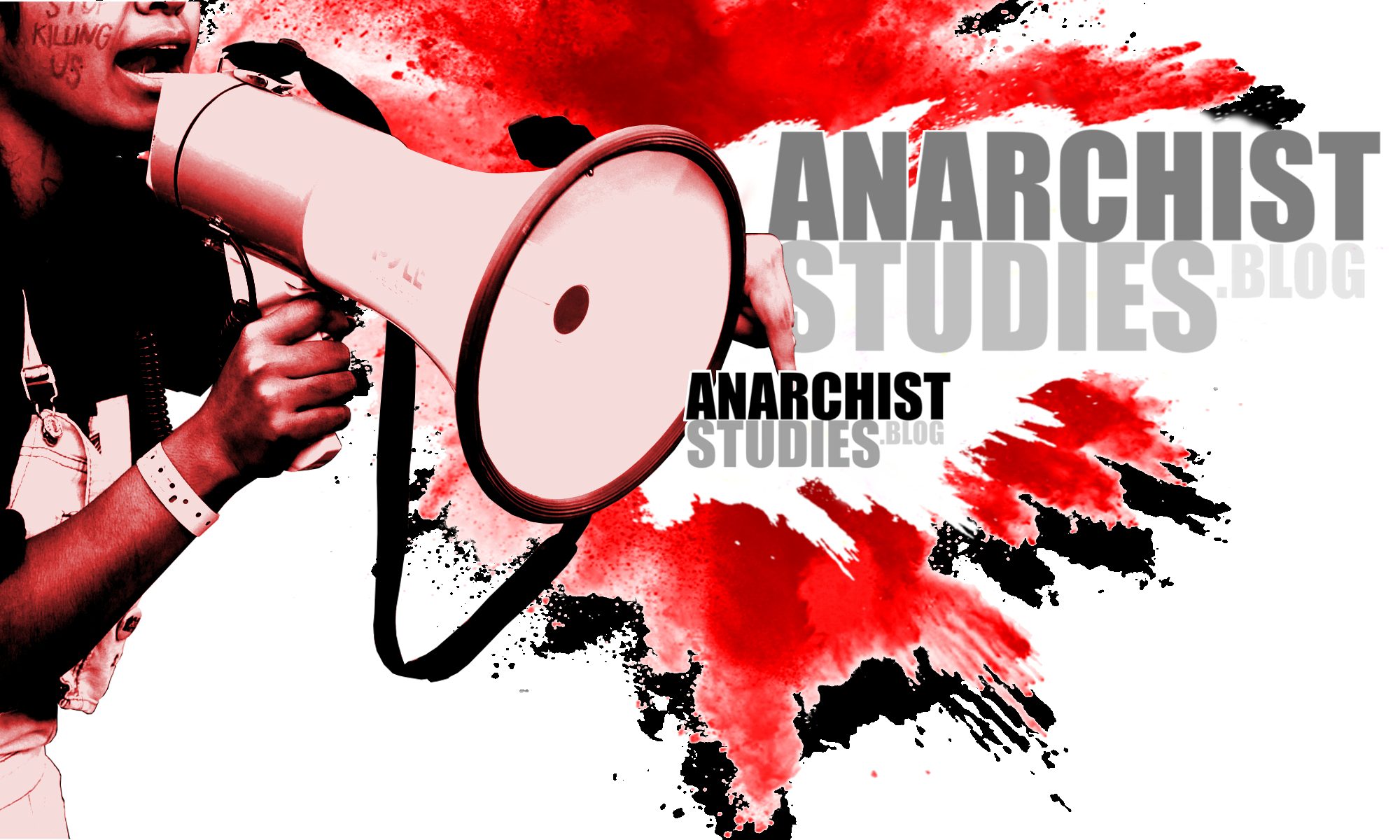Kes Otter Lieffe in interview with Jim Donaghey
11th January 2021
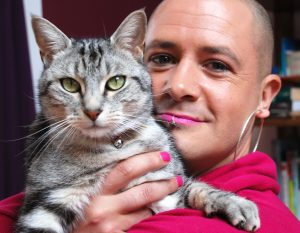
Kes Otter Lieffe is an author who writes from her experiences of community organising and activism as a working class, chronically ill, femme, trans woman. Her trilogy of sci-fi/trans/queer/anarchist/dystopian novels began as a DIY publishing effort – Margins and Murmurations was self-published in 2017, followed by Conserve and Control in 2018. The final part of the trilogy, Dignity, was published by Active Distribution in 2020 (having already picked up Margins in 2017), along with re-published editions of the first two novels. Active kindly sent the books to me during the summer of 2020, providing some much needed sci-fi entertainment – but, the escapism was somewhat limited. The novels’ near-future speculation resonates eerily with the unfolding crises of our current moment, and the characters and communities within the pages chime with real world social movements. The imagined realm of these fictional stories is anchored firmly to lived experience, so, as all good sci-fi should, this fantasy diversion generates important questions about the here-and-now. I was lucky enough to have a conversation with Kes about the books, and the ways in which her own life experiences and identity are reflected in them. (No spoilers!)
Jim Donaghey: I’ll start with an unabashed fan question: Where is The City?! I realise that the books are fiction – but the description of the place where the stories unfold felt very real; the geography, the textures, the sounds. To what extent is The City based on existing places?
Kes Otter Lieffe: It’s lovely to meet you and unabashed fan questions are my favourite kind! The City is inside all of us; the part of our imagination walled-in and controlled by the State and corporations. Alternatively, it’s a real place. Alternatively, it’s a few real places. It’s definitely in Europe though and a lot of goshawks and robins live there.
JD: Am I right in thinking that Brussels and Berlin are the cities most familiar to you? Are those cities reflected in the trilogy’s fictional City? Or, I suppose, how much do you consciously think about ‘real’ spaces when constructing these imagined spaces?
KOL: I guess I’ve lived long term in about ten cities by this point – something that stills feels odd as I’m a country girl at heart. In my experience, the spaces, dynamics, personalities, textures that I write are all things woven between real life and imagination. There will be a memory of a sticky coffee cup or the smoke from a forest fire and an argument that never happened. A fictional wall and a very real emotional one that blocked my path until I found a way around it. It’s always a bit of both I guess. I love that everyone wants to know where The City is … and a girl has to keep some mysteries.
JD: That’s a fair point – let’s leave that mystery hanging. You mention the wall, which is an important feature of the stories, but I was also struck by the key role played by the cliffs (on the other side of The City). That literal margin generates jeopardy at some points, is a border for The City, and puts a physical limit on the story world. Was the inclusion of the cliffs a happy accident, based on a real place, or was it a more deliberate narrative device?
KOL: There are a couple of cliffs I had in mind for some of the scenes. Some of my softest memories are moments shared with seabirds and tough little plants living at the edge of the land. I’m also fascinated by this idea of edge, and margin, where worlds collide, boundaries bleed and the real action takes place.
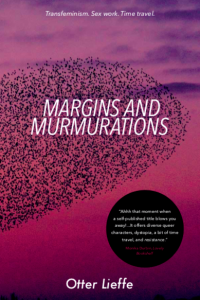
JD: Yes – I guess it’s there in the title of the first novel Margins and Murmurations, but that marginality is a common theme across the trilogy in all sorts of interesting ways.
There is a stark demarcation between the urban and natural worlds in the books, marked by the wall and the scorched perimeter. Is that a reflection on the separation that exists between the urban and natural worlds in our contemporary society? Maybe being a country girl who has moved to the city feeds into that as well?
KOL: I love these questions and they really get into the heart of what I wanted to write. This relationship, and tension, between living land and concrete cities is a strong theme in my life and it was inevitable that it would come through in my writing. I grew up way out of the city and that’s where my heart still is. The land is where I begin and end my day, even if I now live surrounded by asphalt and cement for kilometres in every direction.
There’s something very queer in this experience: like so many of my community, I have migrated to cities for survival. Cities pull us in and almost never let us go. And rural environmental movements can be overwhelmingly cis-het; not always a great place to be for people like me.
Also, like so much in this queer world, a strict line between living places and dead places, the city and the land, doesn’t actually exist. Life is everywhere in Berlin, surviving, growing community, resisting, even though it’s an industrial disaster for non-humans in almost every way. The land is still there, even when it’s harder to find. The river Spree still flows day-in, day-out, through the glacial valley I call home for now. Peregrines and kestrels still hunt over abandoned airports and scruffy bits of park. Life is everywhere if we look hard enough.
JD: Yeh, the pull of the city is profound, and even in radical politics a particular notion of ‘The City’ has come to dominate in recent years (David Harvey’s ‘right to the city’ or Murray Bookchin’s ‘libertarian municipalism’ spring to mind among the trend for city-centric politics). But in your books the natural world serves as a reservoir of resistance and the narrative arc of several characters, at various points, is about a reconnection to nature and escape from the urban. Is that focus on the city a shortcoming of radical politics today? Should we be looking for ways to bring the natural world into the urban world? Or abandon the city altogether?
KOL: The boundary isn’t clear to me, almost certainly because edges and margins are my playground. When I share my morning coffee time with a woodpecker in the tree outside my window, I am with nature. I also yearn for open skies and the feel of moss under my feet. Sometimes I feel so disconnected, I don’t know how to survive it.
Growing up poor, and still living precariously, I know that real access to land is something I may not experience in this lifetime. I dive into the connections I find, when I can find them, and they nourish me to continue.
JD: It’s interesting that you describe the city as a place for survival for queer people, because in the novels that dynamic is flipped – the natural world is the sanctuary, and The City is where all the hostility is focused. You mention that your heart is still outside the city – is the ‘natural sanctuary’ of the novels an expression of wanting to be able to live safely and comfortably in a natural/rural place?
KOL: It’s a really good point. The urban stage of my life has always been a compromise and I’m working on a plan to escape cities (and maybe The City) as soon as possible so I can get ready for whatever’s next. Margins and Dignity particularly tell of that yearning. It’s also interesting how complex it is. Margins starts with some of the main characters living out on the land. And it’s beautiful and everything they could dream of, but they didn’t actually want to be there. That eviction from their lives in The City is pure pain. We find and create sanctuaries where we can, I guess.
JD: I like that – we all need some sanctuary.
KOL: We really, really do.
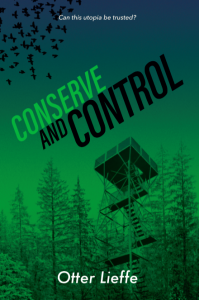
JD: In the introduction I described the trilogy as ‘sci-fi/trans/queer/anarchist/dystopian’ – that doesn’t do the books justice, but, just to pull out one strand of that description, to what extent are the books ‘anarchist’?
KOL: I mean, if book shops create a ‘radical, sex work positive, trans feminist, speculative fiction’ genre section just for my work, I’m okay with that. I can think of many ways, but let me ask you – in which ways did the books feel anarchist for you?
JD: Well, I suppose the history of ‘anarchist fiction’ is pretty varied. Thinking back to some early examples, the influence of William Morris’s News From Nowhere (1890) seems to resonate through the years, but in other instances the desire to make a political point gets in the way of the story. Pouget and Pataud’s How We Shall Bring About the Revolution (1913) is an example of that overly earnest approach, I think. It’s supposed to be an inspiration to struggling workers, but comes off more as an attempt at a blueprint, and the lived vitality of the characters is totally undercut by the technical ‘process’ of how a (capital R) Revolution should evolve.
Your books, by way of contrast, put the characters and their evolution front and centre, and the revolutionary upheaval plays out as the context. I think that’s actually far more effective in being relatable – it gives people a chance to reflect on how they fit into a revolutionary movement, how they contribute, how their agency is the most crucial part of it all. I could see echoes of my own experiences in the books, despite their sci-fi setting.
KOL: Thank you, I love this. You know it’s really interesting – I definitely feel like I’m writing my visions of the revolution, present and future, real and almost real. Having a vision gives me something to work towards and the opposite of that is also true. The revolution is absolutely made up of people and their contributions and their agency. It’s a lot of meetings and processing dynamics and drinking tea around a fire trying to figure out how to care for each other and meet our material needs. Every time we solve our conflicts without calling the cops, we are living a part of prison abolition. Every time we find ways to care for each other and hold on to each other in a culture centred on disposability, we are growing the revolution. In that sense, I think the revolution is the central story here and not the context. I’m also really happy when I hear that the stories feel relatable and accessible to people. After all, I chose ‘trashy action sci fi’ as my medium for a reason.
JD: That’s a good way to put it – our social interactions are the revolution.
KOL: That’s how I live it. And our connections to the land. And the endless care we hold for each other. As I see it, survival for some of us is, in itself, an act of resistance.
JD: Because the books reflect actual social movement experiences, a few ‘activist caricatures’ appear at various points. One of those is the globetrotting, bourgeois, hippy yoga teacher – readers will no doubt recognise the archetype (and the comic relief that comes with it!). But, actually, when this figure appears in the most recent book, Dignity, you give them a much more sympathetic treatment and we see the character evolve during points of crisis. I thought that was an important aspect of the story – I’m struggling to frame this as a question, but perhaps you could reflect on that point?
KOL: My intention with Dignity was for it to be the most utopic writing I could find within myself. Also, every story needs an antagonist. In the case of that globetrotting, bourgeois, hippy yoga teacher, I wanted to explore if there was … well, let’s not call it hope … maybe potential? Potential for her to grow. Potential for a resistance movement so deep that it didn’t take anyone’s privileged bullshit but could still hold space for people to learn and unlearn and become better.
And pragmatically, I’ve lived and organised in so many communities where we were all super marginalised, passing that famous ten euros around and around between us and sharing whatever resources we have amongst ourselves in mutual aid – which is so beautiful and also, often, not enough. Sometimes, radically, critically, I think it’s okay to create lines of solidarity with those who have more.
It was important for me that the Resistance, as messy and real as it is, could actually be something attractive and joyful that people would actively want to be part of. So much of what I’ve lived as resistance spaces, at least in western Europe, has been uncritically privileged groups existing in a middle-class anarchist/academic/queer tower looking down on people like me, or else desperately marginalised people willing to tear each other to shreds for the slightest bit of power or social capital. Not always of course, but often enough that from the outside that’s all people see. And that isn’t an attractive package to anyone. I know – because I’ve experienced it in other places – that so much more is possible.
JD: You finished writing Dignity just as the Covid-19 pandemic crisis hit us – was that desire to write something really utopic, and the generosity of hope and potential that comes through in the book, a reaction to that unfolding real life dystopia?
KOL: It was certainly a very interesting time to be finishing up a novel about the near future. For me, both Margins and Dignity are utopic writing. Everything that people pick up on as dystopia – an oppressive corporate-state, the vilification of marginalised groups, the extreme inequality in access to resources, the destruction of the living world – are just a step away from the world many of us already live in. For this part, I wasn’t being very speculative at all. True, in 2017 I talked about ‘the economic crises of the 2020s’ and trans people being scapegoated to distract from various crises, which is exactly what has taken place this year. But also, the writing was on the wall and I think a lot of us knew that.
When I’ve allowed myself to really dive into speculation, it’s been to imagine what a deeply diverse resistance movement might look like in Europe. What if it was intergenerational, post-TERF, ecological at its very core? What if sex workers, queer, trans, BIPOC and disabled folk were centred, supported and empowered?
On the other hand, Conserve and Control looks superficially like a liberal utopia – all permaculture gardens and trans-inclusive corporations – but is very much the most sinister world I could find the power to write in 2018.
JD: Yes, I felt that. Despite that ‘utopian’ setting, Conserve and Control is actually far more depressing than the other books – or rather, the inspiration of the Resistance feels more powerful in Margins and Dignity.
KOL: Absolutely. It was very cynical, very complex. Liberal trans capitalism, the conservation industrial complex, they’re pretty sinister subjects for me, as liberation and the living world are so close to my heart. It’s also a story of class and poverty which are usually pretty depressing. Conserve is kind of the weird one of the trilogy and I love her for that.
JD: They’re all weird! In the best sense of the word.
KOL: Right?
JD: Right! That near-future prescience of Margins comes full circle in Dignity when you reflect directly on the trauma of the Covid-19 pandemic. It was an eerie feeling to read our own unfolding crisis as a piece of dystopian history. But trauma is a theme that resonates throughout the books, and the ‘time travel’ aspect of the stories is reminiscent of PTSD flashbacks (or ‘flashforwards’).
KOL: I live with PTSD and it’s closely interwoven for sure. Trans friends told me afterwards that they had often thought of trans experiences as time travel – thinking about what we were and what we will be. Living in endless waiting lists for clinics and affirmation procedures, waiting and looking to the future while living stuck in the past.
An important subject for me is the potential for embracing our pain, our oppressions. What if the most marginalised groups are actually the best at surviving the apocalypse, because we always have been? What if that which has cursed us could be our greatest strength? Also, sometimes trauma is just trauma and there’s nothing romantic or hopeful about it.
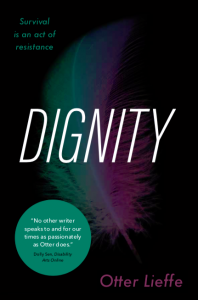
JD: The books embrace all sorts of difficult material, but I noticed that when it comes to big riots and mass violence, the stories often step around those moments, and leave the details to the readers’ imaginations. Was this to avoid descriptions of action that would be potentially traumatic or triggering? Or, perhaps this was a move to side-step the macho, cult-of-violence revolution that seems to dominate this sort of fiction?
KOL: The latter sounds about right. Being the kind of person I am, doing the sort of organising work I do, I wasn’t ever going to be able to do justice to writing those kinds of scenes – at least not yet. Working hard in the background, doing the invisible care work that nobody recognises as labour – or resistance – doing the dishes for the ‘fighters’ and cleaning up the emotional impact of the demo afterwards, that’s much closer to what I know.
JD: One of the main contributions of your trilogy of books is the foregrounding of trans, queer, disabled and otherwise marginalised people. In terms of sci-fi literature, I guess Le Guin’s The Left Hand of Darkness is the closest thing I can think of that tries to do something similar, with the theme of gender fluidity. Would you consider Le Guin as a direct influence on your work? Is there a trans/queer thread in sci-fi literature that you place yourself within? Or is your approach a critical intervention into the genre?
KOL: I mean, I’m very flattered! I do remember reading Ursula Le Guin’s work when I was small so I’m sure that it’s an influence. I also consumed an extraordinary amount of trashy pop sci-fi, some of it involving dinosaurs. I didn’t grow up in a house with a lot of books or with importance placed on them. I’ve never had any literary ambitions at all until, oops, that seems to be a chapter of a book, whoops, now it’s a trilogy. It’s a bit of a mystery how that happened to be honest. I also write marginalised experiences into my work, because I have some of them and that’s all I know.
I’ve actually had a vision for myself that I’m calling ‘the Dream of Ursula’. At some point I read an interview where she talked about not having social media and never knowing (or needing to know) what people say about her work. There’s privilege there of course; having other people take care of the structural work to focus on writing feels like a distant reality for me at this point. But that’s why we call it a dream.
JD: Are there books or writers in that trashy pop sci-fi genre that have been particularly influential?
KOL: Hmm … I think I’m not good with influences, it makes me feel too much like an author, or even worse, artist, and that makes me squirmy. Also, it’s just a bit embarrassing to admit that I was raised on trash TV and Hollywood and I barely ever have time to read. Non-human influences though? I could list them all day. And of course there are so many people who have taught me and guided me through adulthood in my politics and beliefs. That’s so big, it’s hard to describe it well.
JD: Well, let’s not forget that sci-fi books are still viewed by ‘proper’ writers and publishers as trash. Iain Banks even went as far as to write his sci-fi novels as ‘Iain M. Banks’, and, if I recall correctly, his publishers would only let him do the sci-fi stuff if he promised to keep writing the ‘proper’ fiction novels too. But we love the trash right? No shame!
KOL: Interesting, I hadn’t thought about in that way. I think the word trash has been an edgy one for me as I pretty much grew up white trash. There’s a lot to reclaim there. And in terms of fiction, I often think of it as a synonym for more-accessible and less-academic and I’m so here for that.
JD: But, I wonder, if you’re not an ‘author’ or an ‘artist’, how would you describe what you do?
KOL: I guess those terms feel very middle-class and carry a lot of weight. Art as a concept means little to me so it seems unlikely that I’d be creating it. I’m not sure I have better terms at this point, but I’m also not so central to the story. I feel like the stories have their own lives and purpose and they’re growing out of a community experience for something larger than me and my squirmy insecurities.
JD: That issue of accessibility is interesting. You self-published the first editions of Margins and Murmurations and Conserve and Control – all three books in the trilogy are now out on the anarchist publisher Active Distribution (which is where I heard about them). Was DIY publishing your first intention, or was it a form of last resort after trying the commercial publishing route?
KOL: Publishing has been a whole story in itself. What’s clear is that, until bookstores create that special section for me and until stories about revolutionary, organised sex workers and traumatised, elderly, trans women become mainstream, I don’t have as many options as say, a middle-class, cis author writing about romance or fighting aliens or something.
For most of my life, writing a novel – or really anything that would become widely read – felt unreal and wasn’t even on my radar. I didn’t have that privileged sense of ‘always having a book inside me’, I had the sense that people like me don’t write, we are born to serve (capital) and survive in any way we can, to clean, to work in factories or do unseen care work, and I’ve been doing that in one way or another for a good part of my life.
Let’s call it several decades of writer’s block and socially reinforced imposter syndrome that I’ve had to push through. I’ve managed pretty well, even though deep down, I doubt myself and my place in this world of writing and books, pretty much all the time.
Anyway, somehow, one fateful day, I self-published a novel. At the beginning I assumed I’d give away a few dozen books to my mates and that would be nice and enough for me. It was an incredible amount of work to pull it together. Not the writing, which is just wonderful and so decadent for me, but finding a trans-competent editor, a designer, learning to typeset (from scratch), learning to self-publish (from scratch), crowdfunding the entire thing so I could still pay bills, and building my ‘audience’ from a few dozen people to a whole lot more than that. Then ensued the real work of carrying books from squat to community centre to library to gathering to conference, learning to do public speaking for the first time in my life (preferably without throwing up) – and then doing it in over eighty events during an eighteen-month tour.
This year, as you mentioned, I re-released the first two novels and completed the trilogy by publishing a third. A short story of mine was published this year in an anthology on queer resilience during the apocalypse. I collaborated on a zine about queer ecology: also published. I guess I’m officially a published author now, something no-one could have expected from a person like me. I’ve sold some thousands of books in at least twenty-five countries that I know about. Working with some inspirational organisations I’ve been able to send hundreds of copies to queer and trans folk in prisons. I get contacted regularly from people who were positively impacted by my work, and I hold space for other marginalised writers to dive into their craft. Let’s say that it’s probably time for me to start reassessing some of that self-doubt.
Despite these things, I still work just as hard as ever sending books, contacting shops, giving interviews, doing the background work – and just so much admin – of getting my writing out into the world. That dream of sitting back by a lake and just writing books to my heart’s content, never seeing a review, having my promotion taken care of, my rent covered by book sales, still feels pretty far away.
JD: Ah, ‘the Dream of Ursula’ again! It does sound pretty good.
So will we get to meet Ash, Pinar and the Resistance again? Or will it remain as a trilogy?
KOL: Good question and I’m actually not sure. I miss them intensely when I’m not writing their stories and that’s a big part of where Dignity came from. I’m halfway through writing a new novella – something totally different – with another novel brewing after that. Who knows what the future holds?

For more information, visit: OtterLieffe.com
All Kes Otter’s books are available directly from her, and the Resistance trilogy is also available at the Active Distribution webshop.
